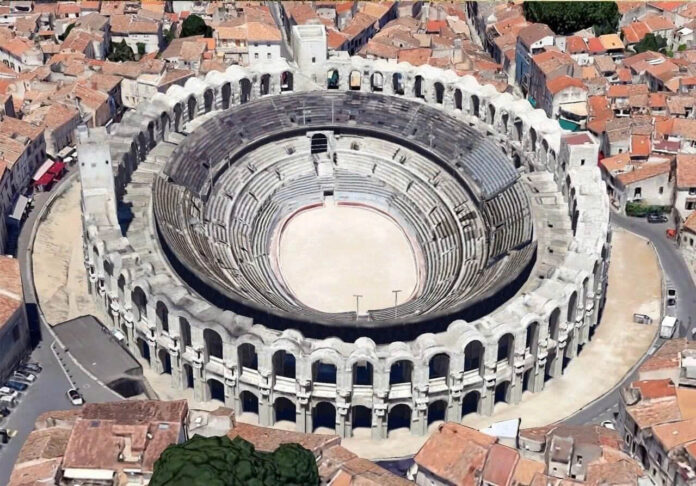A Journey Through Time

In the heart of southern France stands a testament to Roman ingenuity and the enduring spirit of human civilization – the Roman Amphitheater of Arles. This grand structure, born in 90 AD under Emperor Domitian’s reign, has witnessed nearly two millennia of history, adapting and evolving with each passing era.
The Birth of a Colossus
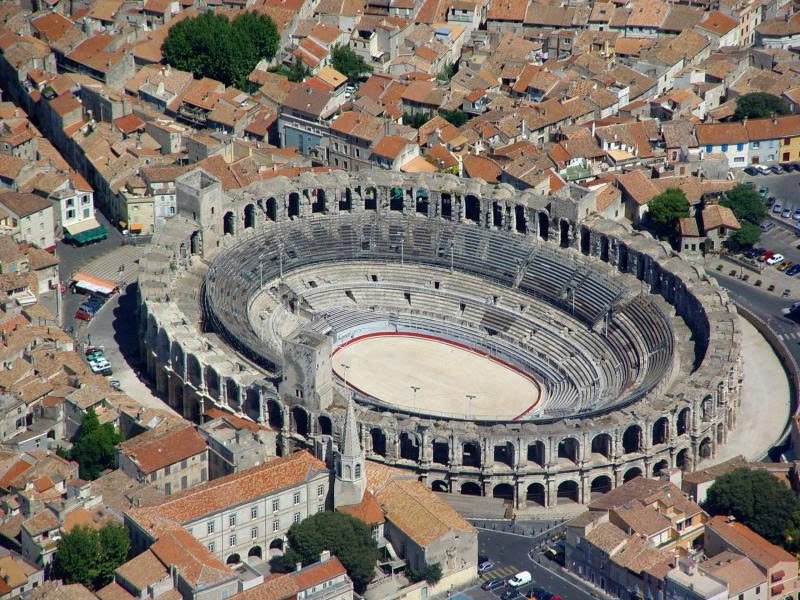
As one of Gaul’s largest amphitheaters, Arles’ arena once hosted over 20,000 spectators, rivaling even Rome’s famed Colosseum. Its elliptical design, a hallmark of Roman engineering, ensured every citizen had a prime view of the spectacles within. The arena’s twin tiers of arches, adorned with Doric and Corinthian columns, spoke not just of architectural beauty but of the very hierarchy of Roman society.
From Gladiators to Fortresses
For centuries, the amphitheater served its intended purpose – hosting gladiatorial combats, wild animal hunts, and public executions. These events were more than mere entertainment; they were a powerful tool of the Roman state, reinforcing communal identity and loyalty.
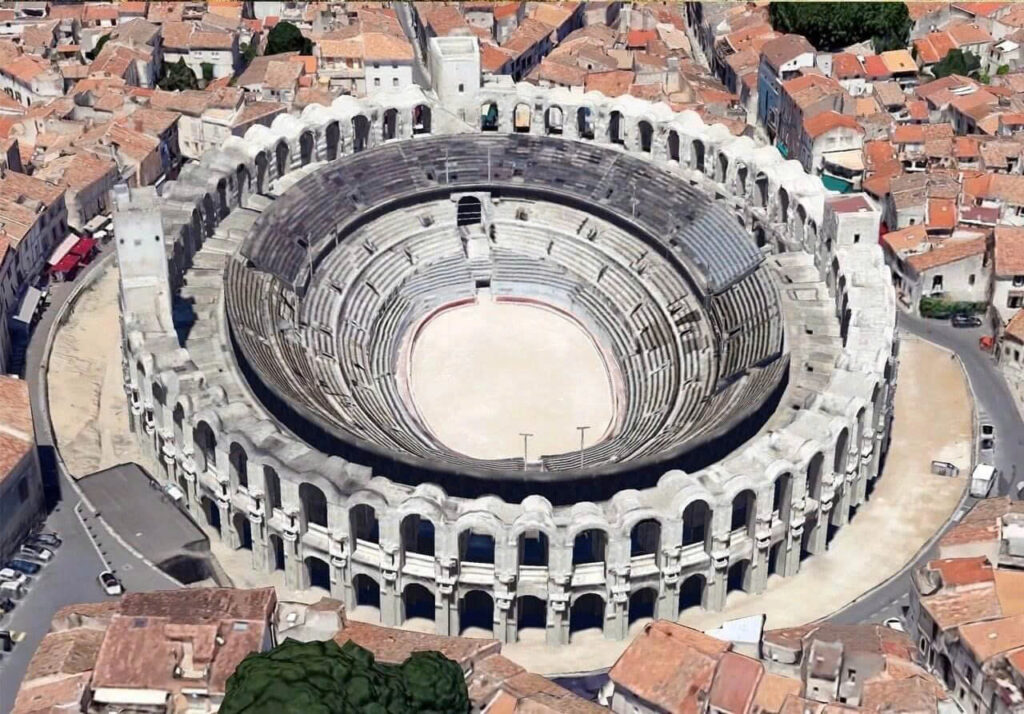
But as Rome’s power waned, so too did the amphitheater’s original purpose. In a remarkable twist of fate, the once-bustling arena transformed into a fortified town during the Middle Ages. By the 6th century, nearly 200 houses, along with chapels and defensive towers, had sprung up within its ancient walls. The gladiators’ arena had become a citadel, sheltering a community from the tumultuous world outside.
A Renaissance of Purpose
The 19th century brought winds of change to Arles. Under the guidance of writer Prosper Mérimée, a passionate campaign began to restore the amphitheater to its former glory. By 1830, the medieval dwellings were cleared, revealing once more the magnificent Roman structure beneath.
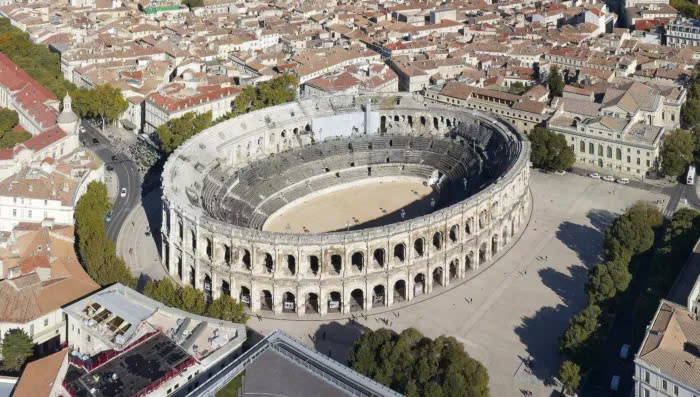
This restoration coincided with a renewed European fascination with classical antiquity. In a poetic nod to its past, the first event held in the newly cleared arena was a bullfight – a spectacle that, while not Roman, echoed the spirit of public entertainment for which the amphitheater was built millennia ago.
A Living Monument
UNESCO Recognition and Modern Relevance
In 1981, UNESCO recognized the amphitheater’s extraordinary historical and cultural value, designating it as a World Heritage Site. This honor not only celebrated its past but secured its future as a treasured piece of world heritage.
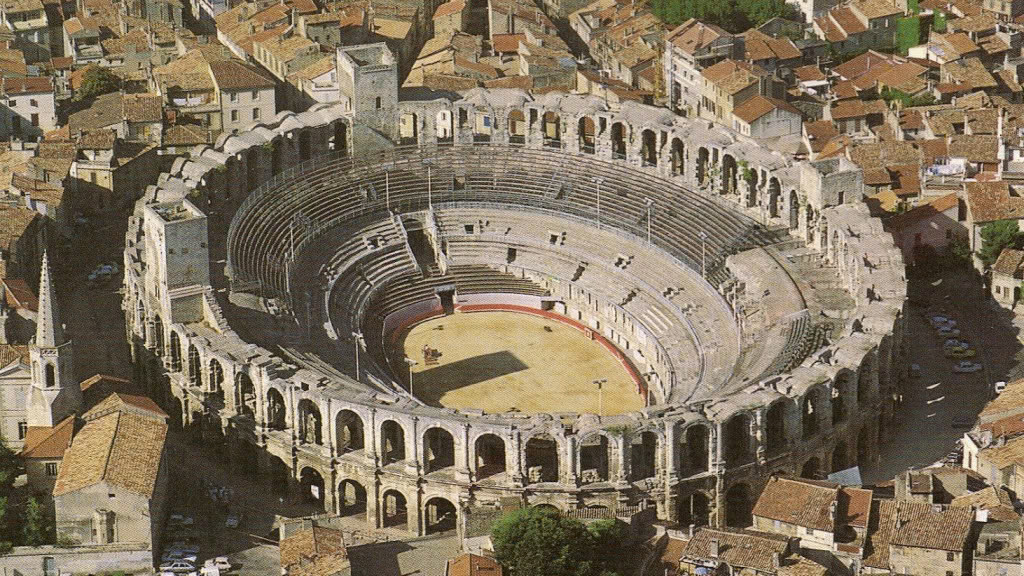
Today, the amphitheater of Arles continues to captivate and serve its community. Its ancient stones now resound with the applause of concert-goers, the gasps of theater audiences, and the cheers of spectators at traditional bullfights. It stands as a living bridge between past and present, a space where history is not just remembered but continually made.
The Eternal Arena
The story of Arles’ amphitheater is one of resilience and reinvention. From its origins as a symbol of Roman power to its transformation into a medieval fortress, and finally to its current role as a vibrant cultural center, it has continually adapted to the needs of its time while never losing its essential character.

As visitors walk its ancient corridors or sit in its time-worn seats, they become part of an unbroken chain of human experience stretching back two thousand years. The Roman Amphitheater of Arles is more than a monument; it’s a living testament to the enduring power of human creativity and the timeless allure of gathering spaces that bring communities together.
